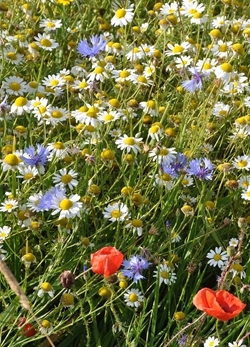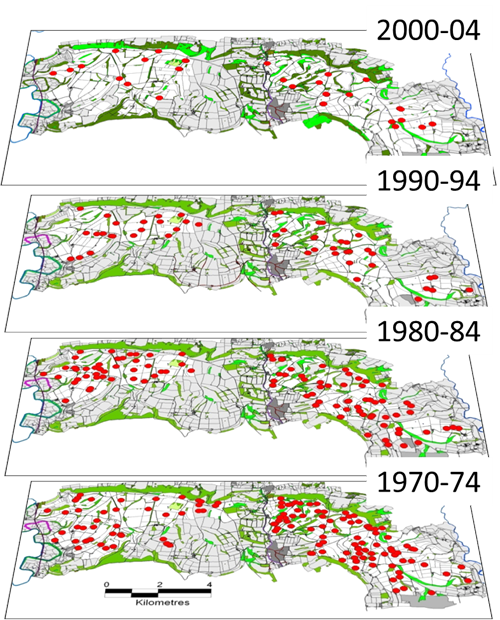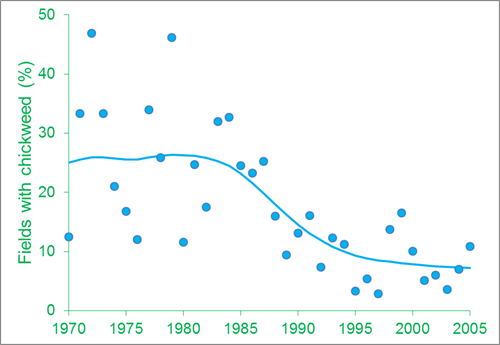 Since the beginning of the Sussex study we have recorded the occurrence of arable flora in approximately 100 cereal fields across the Sussex study area in June, together with broad measures of abundance of monocots and dicots. From this we can measure change in arable flora and, together with the land-use and herbicide data collected, set the changes in arable flora in context with the changes in management undertaken on the study area. This analysis is undertaken periodically, with the last update in 2004.
Since the beginning of the Sussex study we have recorded the occurrence of arable flora in approximately 100 cereal fields across the Sussex study area in June, together with broad measures of abundance of monocots and dicots. From this we can measure change in arable flora and, together with the land-use and herbicide data collected, set the changes in arable flora in context with the changes in management undertaken on the study area. This analysis is undertaken periodically, with the last update in 2004.
The long-term trends in the occurrence of taxa vary, with changes in arable rotations and pesticides affecting different groups of plants. One taxon that has shown a decline over the course of the Sussex study is Chickweed (Stellaria media, Figure 1). Chickweed provides food for farmland birds, including grey partridges, both through plant material (seeds, leaves) and is part of the arable flora which sustains invertebrates that are eaten by chicks. The percentage of fields where Chickweed was found remained fairly stable up until the mid-1980s, when there was a decline. This coincided with changes in both arable rotation and pesticide specificity.
Figure 1: The red dots are locations where Chickweed was identified in cereal fields over a five year period in the June samples

Figure 2: The annual percentage of fields where Chickweed was recorded. From 1986 to 2005 the average percentage of fields where it occurred more than halved compared to the period 1970 to 1985

Further reading
- Potts, G.R., Ewald, J.A., & Aebischer, N.J. (2010). Long-term changes in the flora of the cereal ecosystem on the Sussex Downs, England, focusing on the years 1968-2005. Journal of Applied Ecology, 47: 215-226.
- Ewald, J.A. & Aebischer, N.J. 1999. Pesticide Use, Avian Food Resources and Bird Densities in Sussex. JNCC Report No. 296, Joint Nature Conservation Committee, Peterborough.
- Aebischer, N.J. & Sotherton, N.W. 1995. Long-term trends in food-resource availability in Sussex. In: Fuller, R.J. & Wilson, J.D. (eds) The Ecology of Seed-Eating Birds in Relation to Agricultural Practices : Current Research and Future Directions. BTO Research Report No. 149: 15-16. British Trust for Ornithology, Thetford.
- Aebischer, N.J. 1991. Twenty years of monitoring invertebrates and weeds in cereal fields in Sussex. In: Firbank, L.G., Carter, N., Darbyshire, J.F. & Potts, G.R. (eds) The Ecology of Temperate Cereal Fields: 305-331. Blackwell Scientific Publications, Oxford.